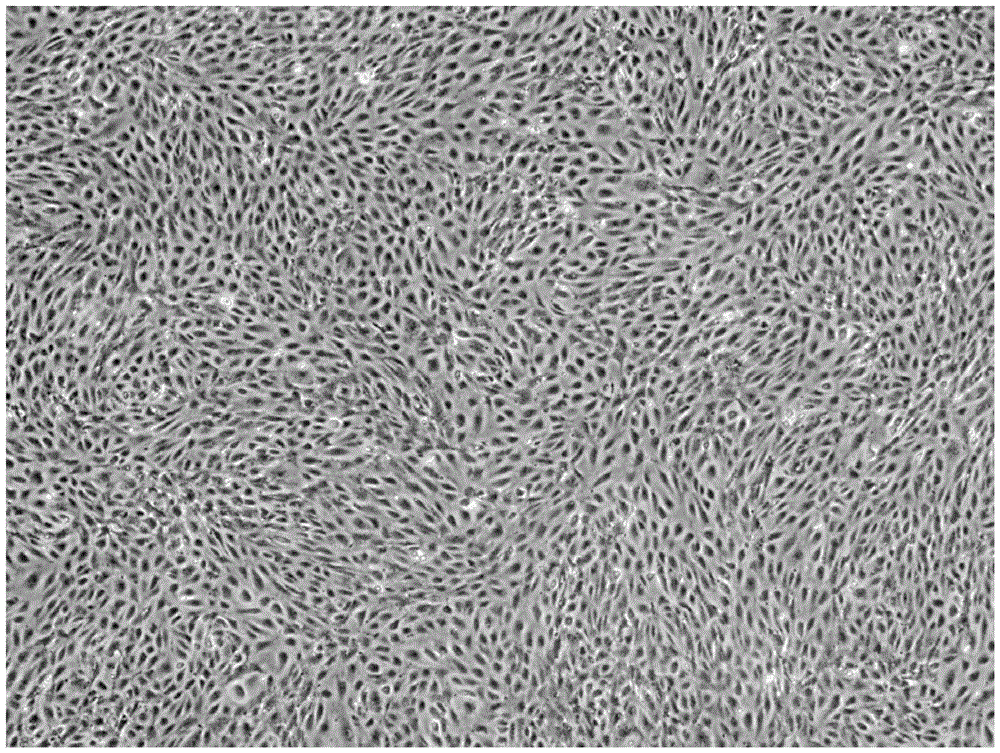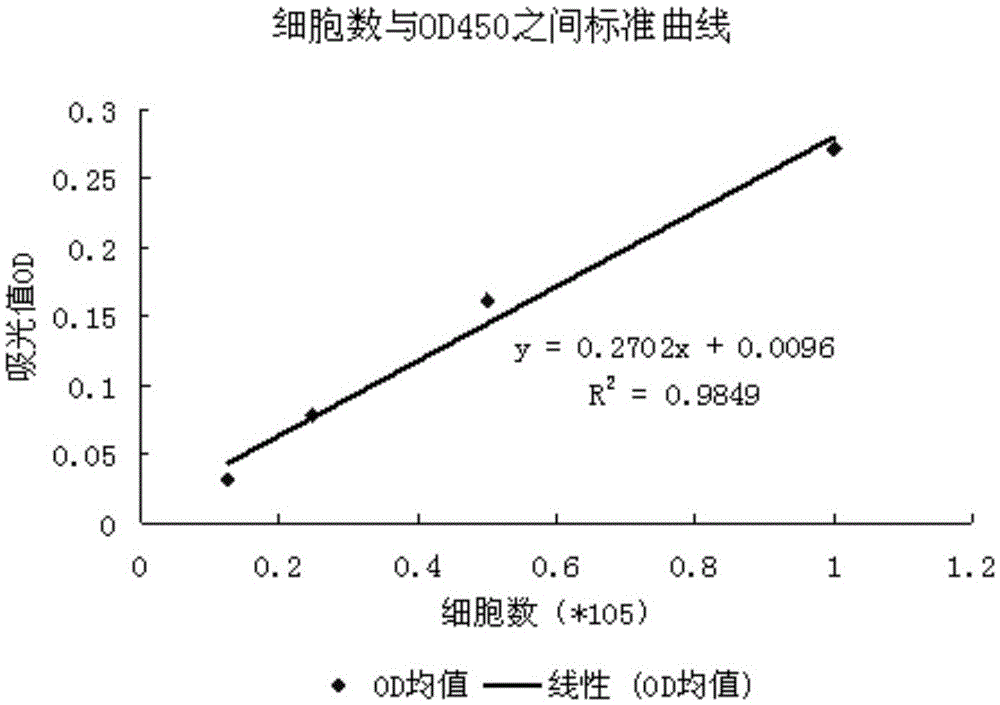Quantitative method for detecting angiogenesis promotion ability of MSC
An angiogenesis and ability technology, applied in the field of stem cells, can solve the problems that hinder the clinical application of MSC and the lack of evaluation of the ability of MSC to promote angiogenesis
- Summary
- Abstract
- Description
- Claims
- Application Information
AI Technical Summary
Problems solved by technology
Method used
Image
Examples
Embodiment 1
[0035] Embodiment 1. Expansion and identification of HUVEC cells
[0036] HUVEC cells were isolated from fresh umbilical cords and planted in T75 cell culture flasks at 37°C, 5% CO 2 The cells were cultured until the P5 generation, and the phenotype of the cells was identified. The results of the identification are shown in Table 1 and figure 1 As shown, the cells maintained distinct HUVEC morphology and characteristics.
[0037] Table 1. Phenotype identification of HUVEC
[0038] Umbilical vein endothelial cell markers
Embodiment 2
[0039] Example 2. Selection of CCK8 incubation time and formulation of HUVEC standard curve.
[0040] Plant HUVEC cells with different densities in 24-well plates. After adhering to the wall, add CCK8 detection solution for incubation according to the instructions of the CCK8 kit, and take part of the supernatant for enzyme labeling at 2 hours and 4 hours after incubation (OD450 / 630 ), the experimental results showed that there was a certain linear relationship between the number of viable cells detected after incubation for different times and the OD value. figure 2 is the standard curve after CCK8 incubation for 2h, image 3 is the standard curve after CCK8 incubation for 4h. With the extension of the incubation time, the OD value becomes larger, but the slope of 2hr and 4hr is the same, corresponding to the same number of cells. Finally, the incubation time was determined to be 2h, that is, the optimal incubation time was 2h.
Embodiment 3
[0041] Example 3. Selection of co-cultivation time and formulation of VEGF standard curve
[0042] HUVEC cells were planted in 24-well plates, cultured normally after starvation culture, VEGF factor was added to the culture medium, the gradient was 4ng, 2ng, 1ng, 0ng, and three replicate holes were set for each group, so as to draw a standard curve and detect the total The amount of VEGF factors secreted by MSCs into the culture medium in the culture system. Select the remaining wells plus a hanging culture dish (transwell), plant MSC in the transwell, the ratio of the number of MSC / HUVEC cells is 2 / 15, 1 / 15, 1 / 30, 1 / 60, and set 3 replicate wells for each group . The co-cultivation time was set at 48h and 72h to determine the best time for co-cultivation. Add CCK8 for incubation according to the instructions for use. After incubation for 2 hours, take part of the supernatant to measure the enzyme-labeled OD450 / 630, and analyze the number of cell proliferation and the number ...
PUM
| Property | Measurement | Unit |
|---|---|---|
| Gradient | aaaaa | aaaaa |
Abstract
Description
Claims
Application Information
 Login to View More
Login to View More - R&D
- Intellectual Property
- Life Sciences
- Materials
- Tech Scout
- Unparalleled Data Quality
- Higher Quality Content
- 60% Fewer Hallucinations
Browse by: Latest US Patents, China's latest patents, Technical Efficacy Thesaurus, Application Domain, Technology Topic, Popular Technical Reports.
© 2025 PatSnap. All rights reserved.Legal|Privacy policy|Modern Slavery Act Transparency Statement|Sitemap|About US| Contact US: help@patsnap.com



